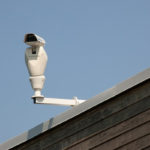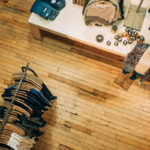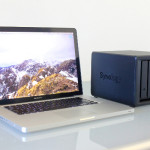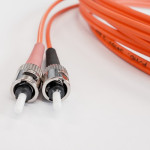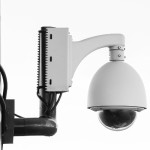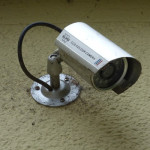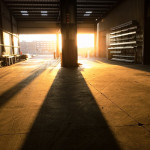The Benefits Of Video Analytics
More and more surveillance camera systems are taking advantage of video analytics, which help to provide a better understanding of the areas being monitored. Whether they are added to your system via additional software or they are built-in to your security cameras, video analytics have advanced over time and deliver more practical and reliable performance.
Not only do video analytics improve overall security, but they can also provide valuable data for business intelligence. Here are some common and helpful video analytics functions and how they can benefit business.
- Facial Recognition
This function can identify individuals in real-time by cross referencing distinct characteristics against public and private databases and/or watch lists of known individuals. With that said, this function makes it easier to identify and locate wanted criminals if they are captured on smart cameras.
When it comes to casinos, for example, facial recognition can be used to detect cheaters. On the other hand, it can also be used to detect high rollers for VIP attention, or to detect high profile shoppers in a retail setting.
- Heat Mapping
Heat mapping measures and rates motion in a given image and uses color to portray the intensity of motion in that area. You might wonder how this data could help businesses, but there are numerous ways it does.
For example, retail stores can use heat mapping to better understand the flow of traffic. Knowing which way customers tend to travel when they enter the store (straight, left, right) can help business owners create a better floor plan. They can identify merchandising areas for optimal product placement which can then lead to increased sales. In addition, the data collected allows management to determine the high volume shopping days and times for more effective staffing and product placements.
- People Counting
This function is self explanatory, as it literally counts the number of people entering or exiting a specified area. This is especially useful for sports and entertainment venues as the data can help improve staffing for concession stands, ticketing areas, and entry/exit points. And since it is based on real-time data, security can better respond and allocate personnel when a large number of people quickly gather at an entrance. - Occupancy Estimation
Similar to people counting, occupancy estimation can determine on average how many people are present, even at different times of day. This data can benefit any type of venue or building. For example, event planners can optimize the use of space, improve staff planning, help determine business hours, and adjust lighting and temperature conditions accordingly. And in emergency situations, security can use this data to communicate with first responders to determine the best response. - Tripwire/Intrusion Detection
This acts as a virtual fence, which can detect when an object or person crosses the virtual line. When detected, security is alerted so they may assess the situation and address it right away. This can also reduce false alarms, and thus eliminate the added costs that go along with them. In warehousing and manufacturing environments, digital fencing can improve compliance by notifying personnel when people or materials cross designated work zone areas. - Motion Detection
Last but not least, motion detection has already proven extremely beneficial for security purposes. Nearly every security camera is equipped with motion detection, and with reason. This function allows you to designate an area of any shape or size, and when any motion is detected within this area, you will be alerted. Museums, for example, can benefit from this technology as it can be used to determine when people are getting too close to an exhibit, or when an object is picked up or moved.
Have you employed video analytics within your surveillance systems? Share your experiences with us on Facebook, Google+, Twitter, LinkedIn, and Pinterest.
For a grand selection of affordable, top quality security cameras and surveillance systems, please visit SecurityCamExpert.com. If you have any questions, would like to request a free quote, or want to schedule a site survey, please call us at 888-203-6294 and will be happy to help.
Surveillance Camera Features
Choosing the right video surveillance system can be tough. With various technologies to consider, as well as your own personal requirements, there’s a lot to consider. For your convenience, here are some common terms and technologies to help you choose the right video surveillance system for you.
Resolution
Because of our smart, HD televisions, we are all likely familiar with resolution as well as the units used to measure it (pixels). From its beginnings at 720 pixels to 1080p, we are now up to 4K and 5K resolution, with further advancements on the horizon.
The goal for resolution is to produce the clearest image for usability. This is defined by detection, recognition and identification and generally requires 80p around the face. Previously, pan, tilt, and zoom (PTZ) technology was employed to get a usable image. Now that camera resolution has greatly improved, less features and cameras are necessary to create high quality video surveillance.
Frame Rate
Another term you are likely familiar with is frame rate. The minimum requirement for the HDTV standard is 30 frames per second (fps). A higher frame rate is ideal, as it will produce a smooth, clearer video, however, it may not be practical. A higher frame rate also requires more bandwidth and storage space as these tend to be larger files. In this case, you should evaluate and prioritize your needs to determine the frame rate for you.
Networks & Storage
Security cameras are a small percentage of the overall cost of a surveillance system (the cost for cables and storage quickly accumulates). With that in mind, you should figure out what you intend to do with the footage so you can make the best decision for networks and storage. For example, ask yourself if you would like to store the footage for later review, actively monitor your feed, or would you like to do both.
Once you determine your goals and how long you need to retain footage (if at all), you can figure out how much space is necessary before your data gets overwritten. Depending on your system and needs, you may be able to refine these details per camera/location as necessary.
Video Compression
Since higher frame rates lead to larger files and more required storage, video compression technology works to counter that. As it advances, it promises to reduce bandwidth and storage to provide more affordable and convenient options for consumers. Currently, H.264 and H.265 are the standard, depending on the cameras you choose.
Light Sensitivity
As you may know, extreme light levels can interfere with a security camera’s ability to capture useful images. However, low light technologies have improved and can produce images in little to no light environments. For example, ‘lightfinder’ technology enables cameras to produce color video down to below one lux (one lux is a dark room, zero lux is an absence of light).
There’s also wide dynamic range, which allows cameras to capture usable images in varying lighting conditions. This feature adjusts and filters light to prevent washed out images, and is useful for hallways and doorways that can open into bright lights.
Software
While most systems come equipped with software (which should be updated and patched regularly and as necessary), you can find and install software applications that deliver specialized features and functions that you desire. Just remember that the higher the cost of the system means more features, which can translate into more training required to learn how to use it.
If you have any questions about security cameras or need help choosing surveillance systems and equipment, please feel free to contact us at 888-203-6294. You may also browse our stock online at SecurityCamExpert.com or connect with us on Facebook, Google+, Twitter, LinkedIn, and Pinterest.
Investing In Business Surveillance
Installing video surveillance for your business may be a significant investment, but it can also provide numerous benefits. Although concerns about privacy and costs may prevent businesses from seeing their true value, many will find that business surveillance not only protects the owners, but also the employees and customers alike. Overall, a business surveillance system can prove to be a valuable asset for businesses. Here are just some of the reasons why.
- Deter Thefts
While video surveillance may seem to be targeted toward outside threats, it can very well prevent insider thefts. Unfortunately, employee theft is a serious and common occurrence for many businesses. Security cameras can help to monitor employees, account for anything that goes missing, and deter employees from misconduct. - Increase Profits
Analyzing video can help businesses learn how to improve their strategy and increase productivity. Managers may supervise employees remotely, allowing them to determine which employees are helping or hurting the business overall (for example, too much conversation or inappropriate internet habits). Reviewing footage also helps businesses see which times of day are over or understaffed, enabling them to adjust shifts accordingly to maximize profits.In addition, businesses with video surveillance systems may be eligible for savings on insurance. The potential savings for having a security system installed may be significant and should be taken into account when determining whether or not to invest in surveillance.
- Workplace Incidents
Frivolous lawsuits are more common than we would like to admit. Luckily, video surveillance can help to protect your business in these instances. Surveillance footage may be used as evidence for legal purposes. And as mentioned previously, the presence of security cameras can deter harassment, violence, and other misconduct from employees, customers, or other outsiders.
Does your business have a surveillance system? What other advantages can business surveillance provide? Share your thoughts with us on Facebook, Google+, Twitter, LinkedIn, and Pinterest.
If you need help choosing the right security camera system for your business or home, please feel free to contact us at 888-203-6294 or visit SecurityCamExpert.com to browse our selection.
Choosing Security Cameras
The holidays are here and heightened home security may be on your mind. The potential for theft or vandalism is always present, regardless of your “safe” neighborhood. Protect your loved ones and your property with a security camera system tailored to your needs.
Getting Started
Before you start shopping around, it’s best to evaluate your security needs. Will you be using your security cameras indoors, outdoors, or both? Do you need a specific area covered, such as the front door, or would you prefer complete coverage of your property?
You also want to consider how you will use your cameras. IP security cameras enable remote access as the feed is broadcast over the Internet, and are a great option if you need to access your feed throughout the day while you’re away. You may also allow other people to view the feed (ex. roommates, family).
Once you have a good understanding of what you want and need, the next step is finding the security solution that fits. One thing that is a must for all security camera systems is quality night vision. You should be sure that video recordings are high quality enough that you can identify faces or license plates during the day or night.
Battery-Powered Cameras
Battery-powered security cameras can operate as standalone units, making them an ideal choice for those who do not need multiple cameras. Because they can be single-camera systems, they are usually more cost-effective than other surveillance options. They are also easy to install as they do not require running any wires or any physical modification to the location in which they are installed (with the exception of some models that require mounting screws to a base). This allows for convenience and flexibility, making it easy to relocate these cameras with minimal trouble.
These cameras are a smart option for apartments or rental properties, and most of these cameras provide special features such as motion detection alerts, automatic recording or motion, audio recording, or even two-way audio communication.
You should keep in mind that these security cameras will require a change of batteries from time to time. Also, these are often Wi-Fi IP cameras and require a stable internet connection for proper transmission and functioning. Without a stable network connection, video quality and access of your feed remotely via app may be compromised. In addition, you may need to factor a cloud storage fee in to your budget, depending on the camera you choose.
Hybrid Cameras
Hybrid security cameras are Wi-Fi cameras that operate via AC power cable, therefore, do not need to have batteries changed, and can be placed anywhere with a rare need to be accessed again.
Because they require AC power, they need to be placed relatively close to an outlet. And if you are looking to install a multi-camera system, this needs to be considered as you should have one available plug per camera and enough cable to reach the unit.
Much like the battery-powered units, these IP cameras transmit the video feed over the Wi-Fi network so they require a strong connection. The difference, however, is that some hybrid models use a local hard drive to store footage, allowing you to bypass cloud storage and fees.
In addition, these cameras may offer motion detection push notifications and recording, as well as audio recording and real-time two-way communication.
Wired Surveillance Cameras
Hard-wired cameras offer the greatest stability since both their power and video feed are transmitted via wires instead of battery or Wi-Fi. Because of this, these surveillance cameras are ideal for areas with high signal interference or unstable connectivity.
Some models provide Power over Ethernet (PoE), which means power and video are both transmitted through the same, single wire. This is helpful for those looking to install multi-camera systems for the entire home as it cuts down on numerous long distance cable runs. But in comparison to the battery-powered and hybrid solutions, these cameras require a more involved installation process thanks to the cables and wiring.
On the upside, wire transmission enables the file size and quality to be significantly higher (up to 4K). Because these are typically multi-camera surveillance systems, they are best suited for outdoor application or whole home or business solutions.
As far as storage, these systems require hard drives to compile and store the footage from various feeds. Storage requirements will depend on your individual needs. You must consider file size as well as how long you want to store your footage before it is overwritten.
If you need help determining how much storage you will need, or simply need help choosing the right surveillance system for you, please contact us 888-203-6294 or visit SecurityCamExpert.com. You may browse our selection of top quality security cameras and surveillance equipment, or inquire about our installation services, site surveys, or request a free quote! You may also connect with us on Facebook, Google+, Twitter, LinkedIn, and Pinterest.
Local Storage Options For Your Security System
There are plenty of aspects to consider when it comes to investing and installing a new security camera system. The goal is to deter any theft or crimes while capturing the necessary footage should an incident occur. With that said, aside from the security cameras you choose, your surveillance storage solution should be of high quality and capacity and tailored to your storage needs.
Storing your video footage locally makes it easier to access, and is usually easier to use. In addition, local storage options are much more cost-effective than other storage solutions. In terms of local storage, there are two main options: internal or external. Internal storage is saved within the camera whereas external storage is saved to a hard drive, usually located within a computer or CCTV DVR/NVR. Each option poses their respective advantages and disadvantages.
Internal Camera Storage
When you store your video footage internally, it is usually via a microSD chip within the camera. This option is ideal for those who don’t want to rely on internet access or wiring, as this can slow down your internet. In addition, since internal storage bypasses any transferring to external storage, video footage is nearly immediately available.
The biggest downside of internal storage is its limited storage capacity. In an effort to combat this, most security cameras using local storage only record when motion is detected. And these cameras are more vulnerable because the footage is stored internally, thus, if the camera is stolen, so is any video evidence that could be used to prosecute the thieves.
External Camera Storage
If you need to record footage throughout the day, external storage is a great option as you can store large amounts of video at a relatively low cost (especially compared to online storage.
Wired Camera Storage
Wired solutions will save your network a load of work and will be faster when watching live feed (minimal lag time). Typically, you will have some type of hub that encodes the recording, and then the wire will route to either a DVR (digital video recorder) or a personal computer with lots of storage space. If you plan on editing the video, personal computers are more convenient.
Unfortunately, wired security cameras are susceptible to severed wires. If you opt for a wired camera, you will want to embed the wire through the wall and make sure that your camera is securely mounted.
Wireless Camera Storage
If you opt for wireless cameras, you are choosing a very secure solution. These are also the easiest to install as you usually just plug it in, connect to a network and install software. Your video would be routed to either a personal computer or an NVR (network video recorder).
Unfortunately, wireless cameras are not ideal for smaller home wireless networks. They can slow down the internet and may be susceptible to delays in your video feed. Should you choose wireless solutions, just be sure that your network can handle the load.
While there is not a universal best storage solution, there are solutions that are better suited for you than others. Take the time to evaluate your needs to determine which storage solution would work best for you.
If you need help determining which video surveillance solution to choose, contact us at 888-203-6294 or browse our inventory online at SecurityCamExpert.com. You can also connect with us on Facebook, Google+, Twitter, LinkedIn, and Pinterest.
Security Camera Cables: Ethernet Vs. Fiber Optic
When installing a new surveillance system, whether at home or for your business, there are many factors that need to be considered. Aside from choosing the proper security cameras, devices, and management software, security camera cables are important and often overlooked.
Security camera cables are crucial to your surveillance system as they are responsible for power and data transmission within your system. You will likely be upgrading your system from analog closed-circuit television (CCTV) to an Internet protocol (IP)-based system. Thanks to special parts called encoders, if you are only upgrading your legacy system, you can keep your analog cameras and coaxial cabling in place. The encoders convert the analog output of the camera for use by an IP-based security system.
Alternately, if you are upgrading to IP cameras and want to keep coaxial cable in place, you would need to install adapters at both the device and the switch (coaxial cable cannot handle the digital output of the cameras).
Encoders and adapters are merely affordable, short-term solutions. And because they introduce new points of failure, they can become costlier in the long run.
IP Camera Systems Cables
Upgrading your system includes your security camera cables as well. For IP-based systems, there are two choices: Ethernet (copper) cable or fiber optic (glass) cable.
Ethernet Cable
Made from twisted copper wires, Ethernet cables carry data using an electrical current. Cat 5e is currently the most commonly used in home applications and can support speeds of up to 1,000 Megabits per second (Mbps) over 100 meters (m). Cat 6, 6a, 7, and 8 cables are more commonly used in business and data centers as they can handle larger data transfers, ranging from 10-40 Gigabits per second (Gbps).
Fiber Optic Cable
Fiber optic cables use light to send digital data along flexible, optically pure glass or plastic fibers that are about the width of a human hair and enable rapid movement of data. There are two types (single or multimode) which determine the speed and length of data transmission. The differences between the two types are significant and dictate how each is used.
- Single-Mode Fiber
Because it has a narrow core of optical glass surrounded by highly reflective cladding, single-mode fiber only carries data via a single mode of light (typically transmitted by laser). This allows for lower attenuation (data loss) over longer distances and, thus, is ideal for use in high bandwidth runs (ex. telecom and communications companies, college/university campuses).
- Multimode Fiber
Multimode fiber has a larger core, allowing several different light signals (more data) to pass through simultaneously. With a larger core comes narrower cladding, which results in more data attenuation. With that said, multimode fiber is better suited for shorter distances (ex. transmitting data and signals across a local area network).
Ethernet Vs. Fiber Optic Cables
Choosing between the two options will depend on your individual needs. Here’s a look at the strengths and weaknesses of each.
Data Handling, Speed & Distance
- Ethernet cable has improved over time, with the Cat 7 and Cat 8 able to support up to 25 Gpbs to 40 Gbps over 30 m runs. Unfortunately, regardless of category, copper has a much higher attenuation rate, which only increases with the distance of the run. Thus, you would need to install an amplifier or repeater for every 100 m (328ft) of cable.
- Fiber optic cables are the better choice, as multimode cables can reliably handle 40 Gbps and up to 100 Gbps depending on the quality of the cable. Speed and distance depends on the light mode, but fiber can reliably transmit data between 610-2,000 m (2,000-6,562 ft) before the signal requires amplification.
Usability, Safety & Security
- Ethernet cabling is straightforward and ideal to use in tight spaces since copper is a flexible metal and can bend a great deal before it succumbs to the stress. However, these cables pose very minimal fire hazard risk, particularly if they are used to carry power to a device (such as an outdoor security camera). And if you are running Ethernet cables to outside cameras (ex. on light poles in parking lots, at the edge of a property), there is also a risk of attracting a lightning strike. In addition, they also post a security risk since they tend to leak data, and are also susceptible to outside interference (ex. electrical sources, other data cables).
- Fiber optic doesn’t radiate data signals at all and provides good security, but it’s not without its faults. Because it is made of glass, despite its flexibility, there is a chance for breakage if bent too far. There is also a greater chance of damaging the cable during installation or during some later construction, and it is difficult to properly splice it. These concerns should be raised with vendors you speak to before purchasing.
Cost
- Ethernet is more affordable in the short term. The cable, its components, and installation tend to be cheaper thanks to its ease of use. However, these tend to require more regular maintenance, thus increasing ownership costs over time.
- Fiber optic is definitely more expensive up front, as cost of cables (especially single mode) and installation are much higher. Despite this, it has a lower ownership cost over time thanks to less maintenance (compared to copper). Also, the cables can more easily handle expanded bandwidth without having to run new cable.
While both Ethernet and fiber optic cables have their advantages and disadvantages, it really depends on your security needs. Have you chosen between the two? Share your experience with us on Facebook, Google+, Twitter, LinkedIn, and Pinterest.
For a great selection of CCTV security cameras, systems, and surveillance equipment, please visit SecurityCamExpert.com or call 888-203-6294 today!
PTZ Cameras: What To Look For
PTZ security cameras offer Pan, Tilt, and Zoom capabilities for more advanced and comprehensive surveillance. Because of their unique flexibility and broad coverage, PTZ cameras are often chosen to remotely monitor large areas such as parking lots or stadiums. If you are considering installing PTZ surveillance cameras for your property, here are some of the best PTZ camera features and benefits.
Large Field Of View
Depending on where you install your PTZ camera, it could have a 360 degree field of view. In addition, most cameras can be pre-programmed to provide specific viewing angles at pre-determined times. Pan and Tilt can also be pre-programmed. Thanks to this, PTZ cameras can do the job of a multi-camera installation, making them a cost-effective and smart alternative for large area surveillance and protection.
Motion Tracking
Most PTZ cameras come with built-in tracking which can be set to detect motion and track a person or object, automatically panning, tilting or zooming to follow the person or object as it moves. This feature can prove invaluable should a theft or vandalism occur on your property. When choosing a PTZ camera, full motion tracking capabilities is a must.
Night Vision
This is an important feature in nearly all security cameras, but especially in areas with poor lighting conditions. The modern, more advanced PTZ cameras can capture images in total darkness thanks to LEDs and special IR filters. The small LEDs emit infrared light, which is not visible to the human eye, but with the special IR filter, the camera sees a well lit area.
Remember that a PTZ camera that is rated for a detection range of 600 feet or more will usually be rated for a max range of 400 feet for night vision. Also, it is recommended that you set up your PTZ cameras in the same lighting conditions they will be recording in, whether dark or light.
Weatherproof
If you will be installing PTZ cameras outdoors, they must be weatherproof. Most PTZ cameras are designed to withstand harsh elements, but it is wise to double check the specifications to ensure their durability. Weatherproof PTZ cameras can be installed in very remote locations such as rooftops or the sides of tall buildings.
Powerful Zoom
PTZ security cameras have a detection ability that ranges from 150 feet (on the low end) up to 1,000 feet (on the higher end). The ability to zoom in on a person or object ranges from 12X to 36X for higher level PTZ Speed Domes. This makes them ideal for large parking lots or building tops as it allows the camera to be discreetly out of sight while still providing the option to zoom in for a better picture of what is happening.
Tamper Resistant
The best place for a PTZ camera is mounted high above the ground, which enables the best view possible, a wide 360 degree range, and added protection. As mentioned, most PTZ cameras are built tough, with rigid metal housings and high-strength polycarbonate domes that are virtually shatterproof to vandals.
Alarm Inputs
Most PTZ cameras have four alarm inputs, which connect to other important devices (ex. motion detectors, door contacts, glass break sensors). The camera can be programmed so that when activity occurs in a given area, other programmed activity is halted in order to zero in and record what is going on.
Auto Focus
The good PTZ cameras will have full range auto focus built in. This ensures clarity no matter where you pan, tilt or zoom. In addition, most have an auto adjust IR LED that quickly focuses the picture when moving the camera in areas of complete darkness. This feature is almost always missing from cheaper cameras.
Simplified Installation
Because they can cover a wider area, it may be more cost-effective to install a couple PTZ cameras to monitor your property (ex. parking lots, garages) rather than implementing several fixed security cameras. You can save on both the initial cost and installation of your system.
High Definition Options
Higher end PTZ Speed Domes are also available in IP versions, which will deliver resolutions from 720i to 1080P, and with HD-SDI technology, which provides high definition video in full 1080P resolution. The HD-SDI PTZ cameras are easier to install and maintain than IP cameras since they are installed and set up exactly the same way as standard analog cameras.
These types are only recommended when you need the highest resolution images possible. They require 2-4 times as much hard drive space as regular analog security cameras and are rather expensive for large installations.
For a great selection of PTZ security cameras and other surveillance system equipment, please visit SecurityCamExpert.com or call 888-203-6294. You can also connect with us on Facebook, Google+, Twitter, LinkedIn, and Pinterest.
Prevent Blind Spots In Your Surveillance System
Security camera systems are meant to protect your property from intruders and collect crucial footage should any incident occur. Unfortunately, if not properly planned, your surveillance system may have blind spots that can be problematic. Blind spots are specific areas that are not in the field of view of your CCTV cameras. These blind spots leave your home vulnerable to intruders who may take advantage of these to gain access or damage your property.
Here are some useful tips to avoid blind spots within your surveillance system.
Take A Picture
Visualizing what you want to cover will help you plan where to place your cameras for optimal coverage. You can use these images as a reference to consult with experts on which type of security cameras, lenses and specs would be best for what you are trying to achieve.
Have an existing system? Test your camera’s FOV (field of view) by having a friend walk through your home while you monitor the live feed.
What Do You Want To Capture?
Prioritize what features are absolutely necessary and the ones that are optional. Also, consider the camera locations and what your goal is for each area. This will help you determine the appropriate resolutions for your different cameras.
Consider Natural Environment
Whether you are installing your security cameras indoors or outdoors, you must consider natural elements of the environment. From daylight to reflections to inclement weather, these elements can noticeably hinder your footage, sometimes even rendering it useless.
To avoid these issues, pay close attention to camera angles and placement. Be sure that there are no potential obstructions, such as branches, trees, or décor, in your camera’s FOV. Invest in cameras that have day/night vision and lenses that can automatically adjust themselves to provide the best picture. And lastly, for your outdoor surveillance, choose weatherproof cameras and/or weatherproof camera housing to protect your equipment from unpredictable weather conditions.
Vandalism Potential
Intruders will often look for cameras and their first instinct is to destroy them in hopes that they can wipe out or prevent evidence of their crime. To prevent this, install cameras high and out of reach when possible, and seek out cameras that are vandal proof.
Location, Location, Location
As previously (and repeatedly) mentioned, the placement of your cameras is crucial to eliminating blind spots. If you are having trouble planning and strategizing your security cameras, or simply need expert advice, feel free to contact us at 888-203-6294.
Do you have your own security camera system advice to share? Connect with us on Facebook, Google+, Twitter, LinkedIn, and Pinterest!
Visit SecurityCamExpert.com to browse our vast selection of quality CCTV surveillance and security camera systems at affordable prices. We also offer site surveys and installation services. Contact us for more information.
What Can Your Security Camera Do?
Surveillance camera systems help to provide home and business owners security, protection, and peace of mind. But did you know you can use your security cameras for additional purposes? Here are some lesser known uses and benefits of security camera systems.
- Time Lapse Videos
Some cameras come equipped with a time lapse feature which can allow you to create videos to display changes over time. These are great for construction or demolition sites, for capturing weather, nature, or wildlife.
- Animal Life
Do you manage a barn, farm, or ranch on your property or remotely? Security cameras can save you time and travel costs by allowing you to check in on your animals remotely. And if you have pregnant livestock, you can keep an eye on the progress and possibly record the birth.
- Pranks
If your family is a fan of pranks, security cameras can come in handy. Features like two-way audio and alarms can startle your unsuspecting guests, and you can capture the reactions as a souvenir.
- Check Weather
Did you know security cameras help when checking the forecast? When you see images and footage from remote areas, such as when you are checking a weather application, those are taken from strategically placed security cameras.
- Capture Precious Family Moments
Whether it’s your baby’s first steps or first words, you may be able to capture it on video. If you were away when it happened, you can review it later, and you can also share the special moment with other family members and friends.
- Insurance Discount
While the cost of security cameras may discourage homeowners, the benefits of having it should be considered. Aside from peace of mind, insurance agencies often offer a discount as well. And this discount can help to offset the costs of the system.
- Prevent Abuse
Nanny cams help to ensure that your babysitter is behaving properly and that your children are safe. On the other hand, nanny cams can also help you keep an eye on your elderly family members and caregivers to make sure your loved ones are not in danger.
- Medical Assistance
Speaking of seniors, especially those who live alone, some home security systems come equipped with emergency pulls or medical alert pendants. When triggered, these instantly dispatch emergency assistance to homes.
- Stop Trespassing & Vandalism
Whether it’s the neighborhood kids or unwelcome intruders, your security cameras can help to prevent any trespassing or vandalism.
- Household Mysteries
Have things gone missing or end up in random places in your home? Want to know who finished your leftovers in the refrigerator? You can review your surveillance footage to solve the mystery.
- Guard Your Garden
For the gardeners out there, you can set up security cameras with motion detection to monitor your goods. If squirrels, raccoons or the like are ruining your crop, you can set up your motion sensor to sound an alarm to scare off the critters.
- Latchkey Kid Safety
Security camera systems enable you to have peace of mind when it comes to latchkey kids. Your system can alert you when someone enters your home, therefore, you will know when your kids get home from school. You may disarm the alarm remotely or have your children do it.
- Increase Resale Value of Home
Having a surveillance system already installed in your home can increase the resale value of your home. It can also keep your home protected during the selling process as you can keep an eye on the strangers that come and go during open houses and inspections.
What other benefits can you think of? Share with us on Facebook, Google+, Twitter, LinkedIn, and Pinterest.
Let us help you choose and install the security camera system of your dreams. Browse our stock online at SecurityCamExpert.com or call 888-203-6294 today!
Commercial Surveillance Camera Placement
For commercial businesses, video surveillance not only keeps customers, employees and properties safe, but it can also prevent incidents and potentially catch the perpetrator if a crime occurs. Should you decide to install a video surveillance system at your business, choosing the right locations is crucial. You want to avoid leaving blind spots as that will compromise your security, making your investment virtually useless.
For a better idea of where you should place your security cameras, here are the best locations for commercial properties.
Entrances & Exits
From the front/main entrance to side or back doors, you want to monitor any and all areas in which individuals can gain access to your building. This allows you to track who enters and exits, and whether or not they have authorized access.
You want to aim your indoor cameras toward the inside rather than at the door. The lighting conditions may change drastically when the door opens and closes, thus compromising the quality of your video.
For increased security, you may want to consider installing monitors that display a live feed on the screen at the entrance of your business to let visitors know they are under surveillance.
Restricted Access Areas
Doors that require a key card or an entrance code should be monitored. This provides an audit of who comes and goes, and who may have tried to gain unauthorized access.
Asset Storage
Whether it’s a warehouse full of merchandise or a server room filled with priceless equipment, you want to position a few cameras (the number will depend on the size and layout) to keep an eye on the area(s) where you store your assets.
By installing surveillance cameras in places where you store resources, documents, or even office supplies may potentially reveal cases of employee theft that may otherwise go unnoticed.
Monetary Transactions
It should go without saying that any point at which money regularly changes hands should be under surveillance. For example, security cameras should oversee cash registers at retail locations, teller stations at banks, and other transaction points on the property.
And you want to mount cameras low enough to see faces. You may even consider mounting a small camera at counter level in case of hats or hooded garments that may obstruct the view of a person’s face.
Work Areas
Whether or not you deal with customers at your location, it is still beneficial to keep an eye on employees. This usually discourages any slacking off or misbehavior. Just remember, you must disclose that there are security cameras and that they are under surveillance.
Loading Docks
Loading docks are prime targets since shipments are delivered and/or sent out from there. You want to have surveillance cameras watching over these areas to protect your employees and assets.
These cameras can also help with false worker’s compensation claims related to injuries sustained while loading or unloading equipment. Installing flood lights in this area also helps to produce clearer footage.
Secluded Outdoor Areas
These include parking lots, alleyways and dumpster pads – all of which are prime locations for shady activity. Security cameras installed in these areas should deliver a live feed to the security office so that a guard may watch for suspicious activity.
Along with surveillance locations, quality equipment suited for your security needs is vital for a successful surveillance system. Let us help you find the right security cameras and equipment for you – visit SecurityCamExpert.com or call 888-203-6294 today! You may also connect with us on Facebook, Google+, Twitter, LinkedIn, and Pinterest.

